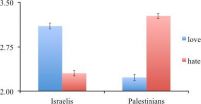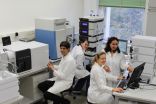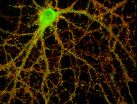(Press-News.org) CHAMPAIGN, Ill. — Publicly traded corporations are increasingly publishing social responsibility reports for investors, who now consider such information alongside traditional financial data before investing in a company.
But according to new research from a University of Illinois expert in financial reporting and financial statement analysis, less-numerate investors are more susceptible to style and presentation effects of the reports, potentially leading them to make unintended judgments about the company.
W. Brooke Elliott, a professor of accountancy at Illinois, says although most companies use a mix of text and graphics in social responsibility reports to highlight accomplishments, they tend to emphasize one over the other.
"Corporate social responsibility reports typically frame a business's strategy in local or global efforts, and the style used to depict that strategy can be shaped by favoring either pictures or words," said Elliott, also the Roedgers Fellow in Accountancy and Professor Ken Perry Faculty Fellow at the College of Business.
"Corporations typically use both pictures and words to convey information and shape the narrative, but their decision about what to make more prominent can have a huge effect on less-numerate investors, who are more likely to rely on non-numerical information when making decisions."
Elliott and her co-researchers found that a fit between the style and presentation of corporate social responsibility reports leads less-numerate investors to experience "subjective feelings of processing fluency and positive affect," which serves as a cue that "the positive performance information from the corporate social responsibility reports can be relied upon," according to the paper.
"By extension, that positively influences the willingness of the less-numerate to invest," Elliott said. "Taken together, it suggests that less-numerate investors are more likely to be influenced by the positive associations generated by the presentation choices in CSR reports than more-numerate investors."
Elliott cautions that "numeracy" – or the way an individual processes numerical information – is not the same as sophistication, investing skill or intelligence.
"Numeracy has been shown to be distinct from general intelligence, and less-numerate investors have been found to be more representative of the general investing population," she said. "The participants in the study were our own graduate students, a very numerate group. But it's the low-end of the numerate group within that sub-sample where these effects occur. So our results are generalizable to groups of investors who actually look at disclosures, process that information and then come up with some sort of investment judgment."
According to Elliott, the key is for corporations to align their strategy and project a uniform approach throughout the report. A cursory review of the corporate social responsibility reports of the Fortune 100 reveals considerable variation in both strategic framing and how corporate social responsibility performance is depicted, Elliott said.
"If you look at the CSR reports for the Fortune 100, more than half have a mismatch in their strategy and presentation style," she said. "So our research has definite implications for how to best design CSR reports that are more appealing to investors, or how to craft ones that would be more helpful in processing information."
According to the paper, companies that wish to project a global focus should emphasize text, which is better suited to depicting abstract, high-level details. On the other hand, companies that wish to project a more community-based appeal should emphasize pictures, which do a better job of depicting concrete, low-level details.
So if a company wants to project that it's saving the world, "which is a high-level and somewhat abstract concept," then the depiction should be similarly high-level, too, Elliott said.
"It's not that they shouldn't use pictures at all, it just means that words should receive higher priority," she said. "How you depict your corporate social responsibility on the front end – whether it's favoring a local or global focus, or an abstract or concrete, high- or low-level detail – should match the way it presents its performance information."
The research has implications for both corporate social responsibility reports as well as other types of investor reports and disclosures, Elliott said.
"If you look at other types of disclosures in annual reports or other corporate filings, you'll see that they employ a mix of text, pictures and graphics to depict performance," she said. "So the takeaways can definitely extend beyond CSR reports. We looked at CSR reports for our study simply because the use of pictures in them is so prevalent."
The findings have implications for investors, too.
"Investors should be aware that features of CSR reports can subconsciously influence their judgments, and that the style and presentation features can interact together to influence how they evaluate a company," Elliott said. "Corporations could likewise develop reports that could cause investors to feel more processing fluency when they study disclosures and thereby be more willing to invest in the firm. Investors should be aware of this and make their resource allocations accordingly."
INFORMATION:
The paper was co-written by Stephanie M. Grant of the University of Illinois and Kristina M. Rennekamp of the Samuel Curtis Johnson Graduate School of Management at Cornell University.
Editor's note: To contact W. Brooke Elliott, call 217-333-9247; email wbe@illinois.edu.
The paper, "How Disclosure Features of Corporate Social Responsibility Reports Interact with Investor Numeracy to Influence Investor Judgments," is available online.
CHICAGO –A new study in the Journal of Food Science, published by the Institute of Food Technologists (IFT), evaluated consumers' choice in fresh tomato selection and revealed which characteristics make the red fruit most appealing.
The researchers found that the most important fresh tomato attributes were color, amount of juice when sliced and size. Consumers were most drawn to fresh tomatoes shown to be red, firm, medium/small sized, crisp, meaty, and that contain few seeds.
The study also found that a lack of characteristic taste and flavor – including ...
What makes human conflict intractable – and how can psychological research resolve historic disagreements? A new study published in the Proceedings of the National Academy of Sciences by a team of researchers from The New School for Social Research, Northwestern University and Boston College demonstrates how seemingly unsolvable political and ethnic conflicts are fueled by asymmetrical perceptions of opponents' motivations – and that these tensions can be relieved by providing financial incentives to better understand what drives an adversary group.
"This ...
Boulder, CO, USA — Stegosaurs might be portrayed as lumbering plant eaters, but they were lethal fighters when necessary, according to paleontologists who have uncovered new evidence of a casualty of stegosaurian combat. The evidence is a fatal stab wound in the pubis bone of a predatory allosaur. The wound – in the conical shape of a stegosaur tail spike – would have required great dexterity to inflict and shows clear signs of having cut short the allosaur's life.
"A massive infection ate away a baseball-sized sector of the bone," reports Houston Museum ...
OAK RIDGE, Tenn., Oct. 21, 2014—Scientists at the Department of Energy's Oak Ridge National Laboratory have discovered exceptional properties in a garnet material that could enable development of higher-energy battery designs.
The ORNL-led team used scanning transmission electron microscopy to take an atomic-level look at a cubic garnet material called LLZO. The researchers found the material to be highly stable in a range of aqueous environments, making the compound a promising component in new battery configurations.
Researchers frequently seek to improve ...
Boulder, CO, USA — Washington's coast is so close to the seismically active Cascadia Subduction Zone that if a megathrust earthquake were to occur, a tsunami would hit the Washington shoreline in just 25 minutes.
One coastal community is preparing for such a disaster by starting construction on the nation's first tsunami evacuation refuge, large enough to shelter more than 1,000 people who are within 20-minute walking distance.
The vertical evacuation-refuge will be the roof of the gym of the new school in Grays Harbor County, Washington. The Ocosta Elementary ...
They may be tiny and stingless but there's nothing sweet and innocent about a species of native Sugarbag bee when it goes to war over a coveted honey-filled hive.
A study by behavioural ecologist Dr Paul Cunningham, from QUT, and molecular biologist Dr James Hereward, from the University of Queensland, published in American Naturalist, found the bees' used their jaws as lethal weapons when they zoomed in on a neighbouring Brisbane hive to boot out the inhabitants and install their own queen to rule.
Dr Cunningham said the attacking bees arrived in a swarm and clashed ...
This news release is available in German. Stroma cells are derived from connective tissue and may critically influence tumour growth. This knowledge is not new. However, bioanalyst Christopher Gerner and an interdisciplinary team from the University of Vienna and the Medical University of Vienna have developed a novel methodology for investigation. Using modern mass spectrometry, tumour-promoting activities from breast fibroblasts were directly determined from needle biopsy samples. Recently this experimental break-through is published in the renowned Journal of Proteome ...
Folsom, Calif., (October 21, 2014) – A new animal study published in the Journal of Alzheimer's Disease indicates that a diet including walnuts may have a beneficial effect in reducing the risk, delaying the onset, slowing the progression of, or preventing Alzheimer's disease.
Research led by Abha Chauhan, PhD, head of the Developmental Neuroscience Laboratory at the New York State Institute for Basic Research in Developmental Disabilities (IBR), found significant improvement in learning skills, memory, reducing anxiety, and motor development in mice fed a walnut-enriched ...
When it comes to the brain, "more is better" seems like an obvious assumption. But in the case of synapses, which are the connections between brain cells, too many or too few can both disrupt brain function.
Researchers from Princeton University and the University of California-San Diego (UCSD) recently found that an immune-system protein called MHCI, or major histocompatibility complex class I, moonlights in the nervous system to help regulate the number of synapses, which transmit chemical and electrical signals between neurons. The researchers report in the Journal ...
Massive black holes spewing out radio-frequency-emitting particles at near-light speed can block formation of new stars in aging galaxies, a study has found.
The research provides crucial new evidence that it is these jets of "radio-frequency feedback" streaming from mature galaxies' central black holes that prevent hot free gas from cooling and collapsing into baby stars.
"When you look into the past history of the universe, you see these galaxies building stars," said Tobias Marriage, assistant professor of physics and astronomy at Johns Hopkins and co-lead author ...





